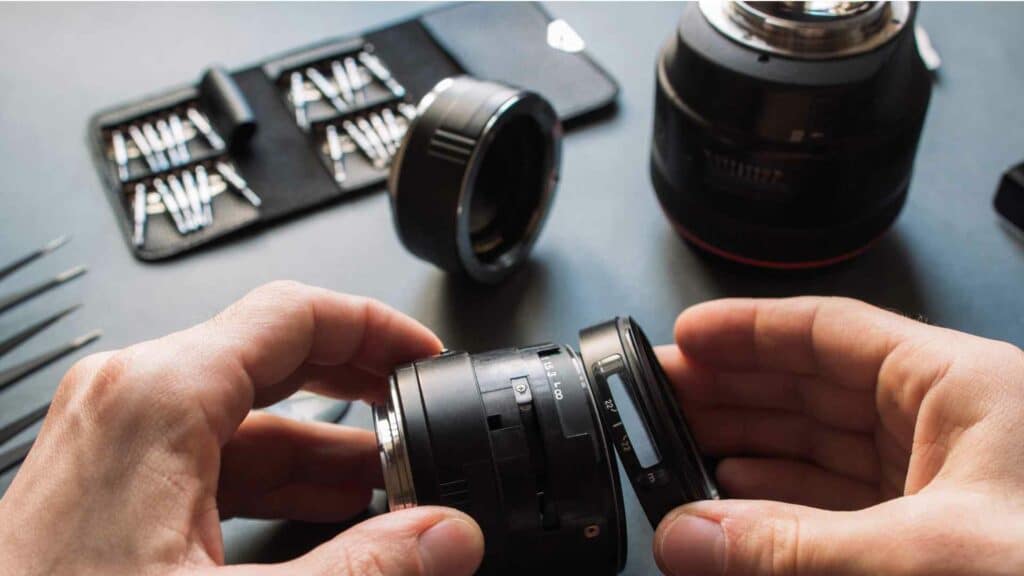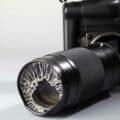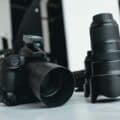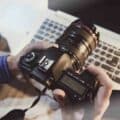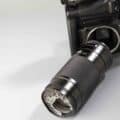A Digital Single-Lens Reflex (DSLR) camera is a wonder of current photography, consolidating the mechanics of a single-lens reflex camera with digital imaging sensors. This combination takes into consideration top notch pictures, exact command over settings, and the adaptability to switch lenses in light of the shooting situation.
Key Takeaways:
- Infuse creativity into what was once considered waste by turning broken DSLRs into unique home decor or engaging in artistic projects such as mixed-media art, turning lenses into sophisticated paperweights, or repurposing camera parts into jewelry and installations.
- Create educational content for others by disassembling the DSLR. As well as enriching personal knowledge, this hands-on approach allows the wider photography community to gain insight into digital photography’s complexities.
- Make use of the advanced features of the DSLR, such as the lenses and sensors, for technical projects. Integrate parts into DIY electronics, or build digital microscopes and homemade telescopes, bridging photography and technology.
Creative Rebirth for Broken DSLRs
Before venturing into the field of creative repurposing, it is obligatory to first place your DSLR camera for repair to a professional repair expert. It could be brought back to life professionally, or, at the worst-case scenario, it might have been destroyed beyond repair. So, after you have checked and confirmed its status, the trip of re-creating your DSLR could start. As a way of giving back to our home, modifying the camera body to be used as a distinctive wall art piece can be a worthy project. Consider a lamp in which a camera is the base, the lens facing upwards continuing to illuminate memories of its photographic past life.
Apart from that, detached lenses can still serve as beautiful paperweights or set up as a macro photography project in Do-it-yourself mode. Pouring these lenses with a delicate glass and design, they can create a great work of art which can become a talking point on a bookshelf or on a desk. This is a process of doing justice to the camera’s service. It further entails giving a new narrative to what was once a broken camera that now serves as a living and working space.
Educational Tools
Being creative with a broken camera and turning it into a tool of education opens a new world of understanding and learning, particularly for those with an interest in photography or technology. The dismantling process of the camera step by step is an interesting journey from complex engineering to design that absorbs such devices. This up-close examination would help students to be familiar with the mechanism of the shutter and the mirror as well as the complicated networking of the sensor and the circuitry.
Subsequently, filming the tearing-down process could provide educational content to a photography tutorial blog or video series for those who would like to learn how to repair cameras or understand camera settings better. Through the process of recycling a DSLR into a tool, you not only broaden your knowledge but you also participate in an inclusive community of learners and practitioners.
Artistic Projects
A shattered DSLR camera, containing all those elements and lenses, presents a great chance for artistic exploration and expression. Every piece can be looked at through creative eyes by photographers and artists which will turn such objects into appealing artworks. As an example, a camera body devoid of its functions, might be made the focus point of a sculpture in mixed media, by melding the technology with the traditional art forms, in a statement about the digital age. Lens, with its ability to focus and refract light, inspires experimental imaging by producing abstract and surreal images which therefore give an insight into our understanding of the world.
Also on the list, little pieces such as gears and screws can be made into necklaces or be involved in complex sculptures, which is a magical way to reflect upon this skill of photography. In doing so, these artists put new life into something considered useless, and in the process they develop an appreciation for beauty and complexity that is a part of old cameras.
Technical Innovation
The jump from a damaged DSLR camera to a new source of tech innovation is a combination of fashion design and engineering skills. Many of the components used in a DSLR, such as the advanced sensors, lenses, and electronic equipment, may be employed in other tech projects. For instance, a digital microscope using a DSLR lens as the base can be used to build a low-priced microscope to suit research and hobby use in exploring this tiny world. Moreover, the light sensor, as a key component, could be incorporated into a homemade telescope, thus facilitating night sky observation for amateur astronomers.
Moreover, the creative uses could include using the liquid crystal display or the circuitry in DIY electronics projects, such as developing a customized digital picture frame or a programmable device. Aside from extending the functional life of the used components, this task is a great learning opportunity for electronics and optics as well.
Environmental Considerations
- The Lens Cap Challenge: Before tossing anything, remember the golden rule – if the lens cap fits, it’s not yet time to quit. Explore every nook and cranny for parts that can be reused or repurposed before hitting the recycling bin.
- Battery Bonanza: Those DSLR batteries aren’t just fancy paperweights. They’re recyclable treasures waiting for their moment to shine again. Find a local recycling facility that dreams of giving your batteries a second life.
- Screws and Gears Gala: Host a gala for your camera’s screws, gears, and other metal bits. Dress code: Rust-free and ready for a new adventure. Metal recyclers will roll out the red carpet for these tiny celebrities.
- Plastic Parts Party: Even the most mundane plastic parts from your DSLR can party. They just need the right venue. Look for electronic recycling programs that welcome plastic components with open arms.
- Glass Glamour: Those broken lens elements? They’re not just sharp reminders of a fall; they’re glass with potential. Specialty recyclers can turn them into something as glamorous as they once were.
- Circuit Board Social Club: Don’t let your camera’s circuit boards live out their days in a landfill. They’re sociable creatures that thrive in e-waste recycling facilities, mingling with other gadgets and dreaming of reincarnation.
- Manual Migration: Remember those instruction manuals? They’re paper, and they long to be reborn. Send them off on a migration to the recycling center, where they can start afresh as something new and exciting.
- Bag and Strap Salvation Army: Your camera’s bag and strap aren’t ready to retire. Donate them to a local photography club or school, where they can continue their mission of protecting and securing photographic dreams.
And if you’re ever in need of a guide through the environmental maze or just a good laugh about it, contact us.


